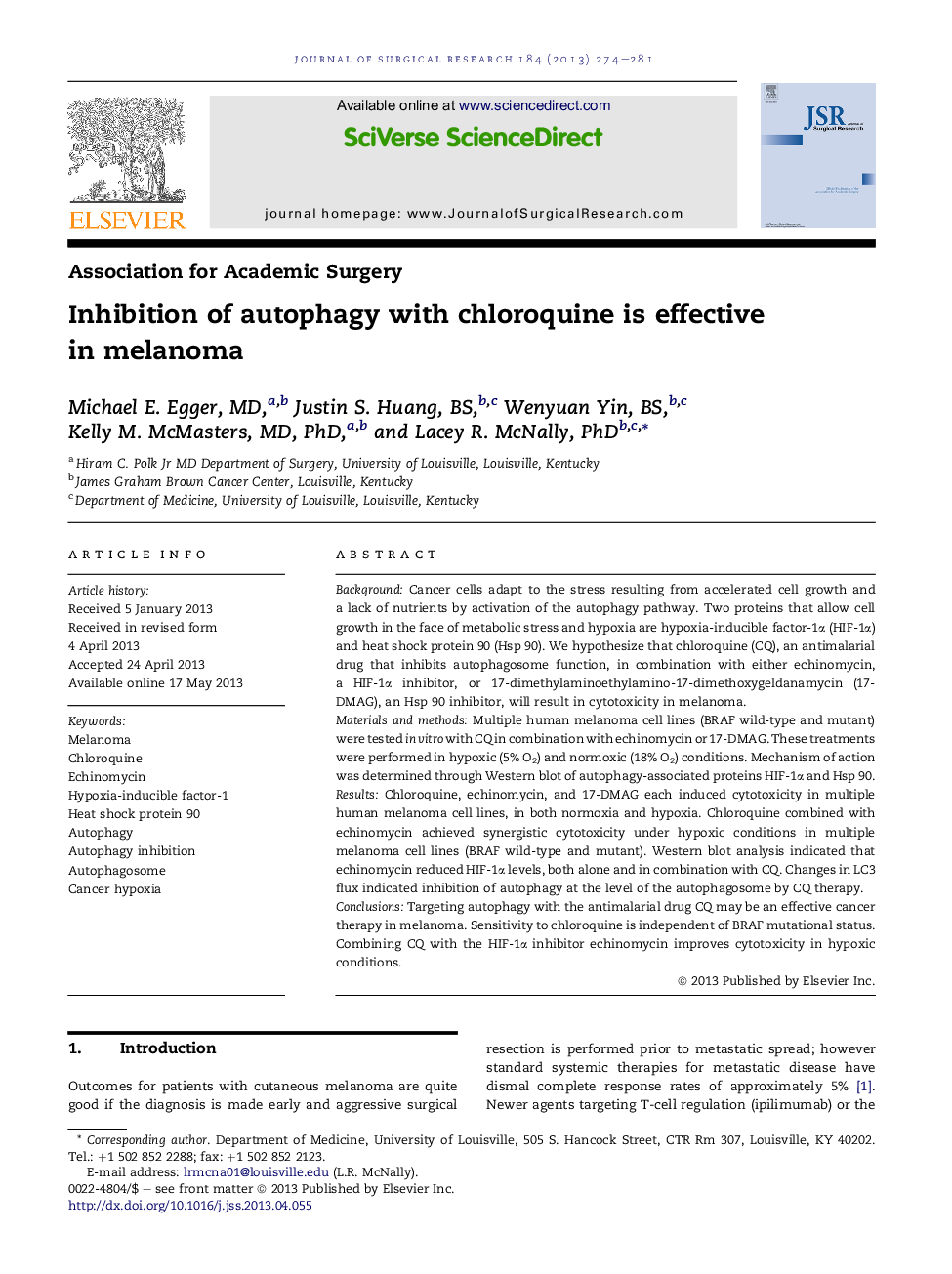| Article ID | Journal | Published Year | Pages | File Type |
|---|---|---|---|---|
| 4300605 | Journal of Surgical Research | 2013 | 8 Pages |
BackgroundCancer cells adapt to the stress resulting from accelerated cell growth and a lack of nutrients by activation of the autophagy pathway. Two proteins that allow cell growth in the face of metabolic stress and hypoxia are hypoxia-inducible factor-1α (HIF-1α) and heat shock protein 90 (Hsp 90). We hypothesize that chloroquine (CQ), an antimalarial drug that inhibits autophagosome function, in combination with either echinomycin, a HIF-1α inhibitor, or 17-dimethylaminoethylamino-17-dimethoxygeldanamycin (17-DMAG), an Hsp 90 inhibitor, will result in cytotoxicity in melanoma.Materials and methodsMultiple human melanoma cell lines (BRAF wild-type and mutant) were tested in vitro with CQ in combination with echinomycin or 17-DMAG. These treatments were performed in hypoxic (5% O2) and normoxic (18% O2) conditions. Mechanism of action was determined through Western blot of autophagy-associated proteins HIF-1α and Hsp 90.ResultsChloroquine, echinomycin, and 17-DMAG each induced cytotoxicity in multiple human melanoma cell lines, in both normoxia and hypoxia. Chloroquine combined with echinomycin achieved synergistic cytotoxicity under hypoxic conditions in multiple melanoma cell lines (BRAF wild-type and mutant). Western blot analysis indicated that echinomycin reduced HIF-1α levels, both alone and in combination with CQ. Changes in LC3 flux indicated inhibition of autophagy at the level of the autophagosome by CQ therapy.ConclusionsTargeting autophagy with the antimalarial drug CQ may be an effective cancer therapy in melanoma. Sensitivity to chloroquine is independent of BRAF mutational status. Combining CQ with the HIF-1α inhibitor echinomycin improves cytotoxicity in hypoxic conditions.
